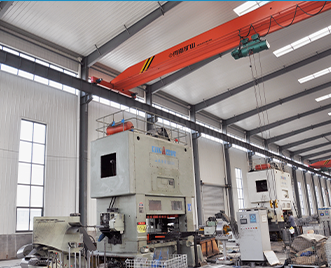Nov . 22, 2024 09:11 Back to list
removing submersible well pump
Removing Submersible Well Pumps A Step-by-Step Guide
Submersible well pumps are essential components in many residential and agricultural water systems, providing a reliable source of water from underground aquifers. However, there may come a time when the pump needs to be removed, whether for maintenance, replacement, or system redesign. This process can be daunting for many, but with the right tools and instructions, it can be accomplished safely and efficiently. Here, we outline a step-by-step guide for removing a submersible well pump.
Step 1 Prepare the Site
Before beginning the removal process, it's crucial to prepare the work area. Clear any debris from around the wellhead and ensure that you have unobstructed access to the pump. Gather the necessary tools, which typically include a wrench set, slings or straps for lifting, a bucket or hose for draining water, and safety equipment like gloves and goggles.
Step 2 Disconnect Power
Safety should always be your top priority. Begin by locating the circuit breaker that powers the well pump and switch it off. This minimizes the risk of electric shock during the removal process. Utilize a lockout/tagout system if available to ensure that no one accidentally turns the power back on while you are working.
Step 3 Remove the Well Cap
Most submersible pumps are located below the well cap. Carefully remove the well cap, using a wrench if needed. Check for any signs of wear or damage while you have the cap off, as this may need to be replaced when the pump is reinstalled.
Step 4 Disconnect the Discharge Pipe
Next, you will need to disconnect the discharge pipe, which carries water from the pump to your water system. Depending on your setup, this may require unbolting or unscrewing connections. Take caution not to damage the pipe, as you will need to reconnect it to the new or repaired pump later.
removing submersible well pump

Step 5 Attach Lifting Equipment
Once the discharge pipe is disconnected, it is time to lift the pump out of the well. Attach sturdy lifting straps or a chain to the pump's lifting bail. Ensure that the lifting equipment is rated for the weight of the pump, as submersible pumps can be heavy.
Step 6 Pull the Pump
Using a winch or a truck with a towing capacity sufficient to lift the pump, gently pull the pump out of the well. Be steady and cautious to avoid any sudden jerks that could damage the pump or the well casing. If the pump feels stuck, do not force it; instead, inspect for any obstructions or entanglements that might be holding it in place.
Step 7 Inspect and Clean
After successfully removing the pump, take this opportunity to inspect it for wear and tear. Check the wiring, motor, and impeller for any signs of damage. Clean the pump and well casing to prevent debris from entering the system when reinstalling a new or refurbished pump.
Step 8 Replace or Repair
Depending on your inspection, you may choose to repair the existing pump or replace it with a new one. Ensure that if you are installing a new pump, it matches the specifications of your previous pump in terms of size, voltage, and flow rate.
Conclusion
Removing a submersible well pump is a straightforward process if approached with the right preparation and tools. By following these steps, you can ensure a safe and efficient removal. Proper maintenance and timely replacement of your well pump can ensure a continuous and reliable supply of water for your needs.
-
Submersible Water Pump: The Efficient 'Power Pioneer' of the Underwater World
NewsJul.01,2025
-
Submersible Pond Pump: The Hidden Guardian of Water Landscape Ecology
NewsJul.01,2025
-
Stainless Well Pump: A Reliable and Durable Pumping Main Force
NewsJul.01,2025
-
Stainless Steel Submersible Pump: An Efficient and Versatile Tool for Underwater Operations
NewsJul.01,2025
-
Deep Well Submersible Pump: An Efficient 'Sucker' of Groundwater Sources
NewsJul.01,2025
-
Deep Water Well Pump: An Efficient 'Sucker' of Groundwater Sources
NewsJul.01,2025
-
 Submersible Water Pump: The Efficient 'Power Pioneer' of the Underwater WorldIn the field of hydraulic equipment, the Submersible Water Pump has become the core equipment for underwater operations and water resource transportation due to its unique design and excellent performance.Detail
Submersible Water Pump: The Efficient 'Power Pioneer' of the Underwater WorldIn the field of hydraulic equipment, the Submersible Water Pump has become the core equipment for underwater operations and water resource transportation due to its unique design and excellent performance.Detail -
 Submersible Pond Pump: The Hidden Guardian of Water Landscape EcologyIn courtyard landscapes, ecological ponds, and even small-scale water conservancy projects, there is a silent yet indispensable equipment - the Submersible Pond Pump.Detail
Submersible Pond Pump: The Hidden Guardian of Water Landscape EcologyIn courtyard landscapes, ecological ponds, and even small-scale water conservancy projects, there is a silent yet indispensable equipment - the Submersible Pond Pump.Detail -
 Stainless Well Pump: A Reliable and Durable Pumping Main ForceIn the field of water resource transportation, Stainless Well Pump has become the core equipment for various pumping scenarios with its excellent performance and reliable quality.Detail
Stainless Well Pump: A Reliable and Durable Pumping Main ForceIn the field of water resource transportation, Stainless Well Pump has become the core equipment for various pumping scenarios with its excellent performance and reliable quality.Detail
